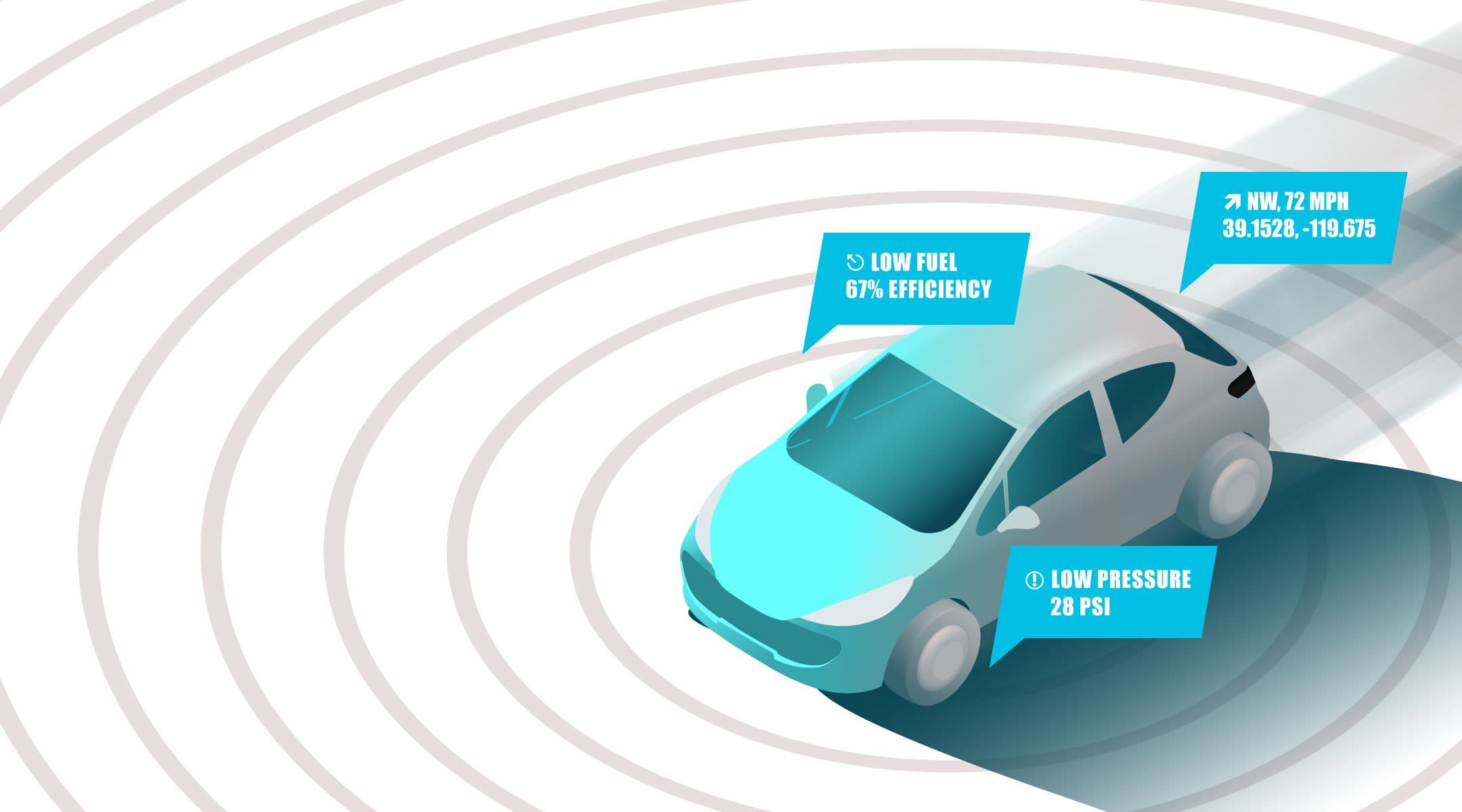This article takes a deeper look at the definition of telematics, how telematics and GPS work in tandem, a brief history of telematics, how telematic devices work, and who benefits from telematics.
- The Definition of Telematics
- Telematics Technology and GPS
- The History of Telematics Technology
- Telematics Devices
- Who Uses Telematics Technology?
- How is Telematics Technology Used in Business?
The Definition of Telematics
Telematics is the pairing of telecommunications and technology to transmit computerized information from one system to another. (The name itself was created by joining the words informatics and telecommunications.)
Telematics is typically used in fleet management to send vehicular data to a device. Which may lead you to wonder: What kind of data and information does telematics pull? This can include location coordinates, speed, harsh acceleration or braking, tire pressure, fuel status, idling time, and much more.
Telematics Technology and GPS
A GPS (global position systems) device is required for telematic systems to work. This device pulls real-time data from the vehicle and is then transmitted either through cellular and satellite networks to a server or cloud infrastructure, where the information can be processed and easily accessible. You can see a visual diagram of this fascinating process in Autonomous Vehicle Technology’s study on automotive telematics.
The History of Telematics Technology
The term telematics was coined in 1978 in a technology report handed off by the French Prime Minister after the first GPS satellites were sent to space. Ten years later in 1988, a wealth of research programs launched an experiment with vehicle telematics to help improve road safety and reduce environmental impact.
However, it wasn’t until the early 2000s that telematics technologies reached enterprise-wide use. Updates had to be made to boost tracking rates beyond one or two instances per hour. Telematics was widely adopted in response to trucking compliance laws, particularly the ELD mandates. The telematics devices helped automate the compliance paperwork. Nowadays, advancements in cloud and M2M technologies have further developed telematic systems, enabling speedy and precise GPS sensor parameters and real-time reporting.
Telematics Devices
So how exactly does the GPS device pull the information from the equipment? There are a couple of ways.
Some devices plug directly into the vehicle’s OBD port, while others are hardwired electrically beneath a dashboard. OBD port devices are easier to install and can transfer from vehicle to vehicle without the need for an automotive technician. This port is primarily used in auto shops to diagnose an issue with a vehicle, but can also pair with a GPS device to track location.
A hardwired device is more permanent and may need to be installed by an automotive technician. Regardless of the installation process, both devices pull power from the vehicle’s battery, so you won’t need to worry about it dying and losing the ability to transmit data and information.
Who Uses Telematics Technology?
Popular telematics applications include car concierge systems, onboard diagnostic services, emergency vehicles, and insurance companies. These vehicular telematics applications work within just about any type of vehicle, including trucks, vans, tractor trailers, school buses, and municipal vehicles.Everyday car owners also benefit from telematics. Many cars have a digital interface and wireless internet connection to prompt roadside assistance or enable you to remotely unlock your car if you left your keys inside or lost them entirely.
How is Telematics Technology Used in Business?
Telematics makes it easy to pull data from a vehicle, however, additional software is needed to conduct an analysis of this data in a way that helps benefit the user or company. Emergency service vehicles may use customized telematics to determine the fastest route to the scene of an emergency or to send an alert if the vehicle needs maintenance.Insurance companies use telematics to evaluate a driver’s road behavior in vehicle accidents. Telematics can help provide crucial information, including speed, RPM, and if the vehicle was riding on flat tires.Telematics can also help companies to cut back on carbon emissions by finding better routes that use less fuel. According to an article on telematic fleets by Smartrak, drivers with aggressive road behavior will on average spend 10.9% more fuel while experienced drivers can use up to 30% less fuel. If a company can keep an eye on this behavior and establish a fleet of responsible drivers, their business could be greatly impacted for the better.
Telematics can also help companies with equipment and heavy machinery in several ways. The data can be used to prolong the equipment’s lifespan. The telematics can transmit error codes and other data to maintenance software. Using that data, mechanics can proactively fix issues before they arise. Another important way telematics provides value to companies with equipment is in helping them understand their usage. Telematics may let you know how often a piece of machinery is being used, or even keep track of in what ways the machinery is being used. For example, you might want to know how often the doors of your crane are being opened in a day.
—————
Learn even more about telematics technology in our ongoing blog series:


